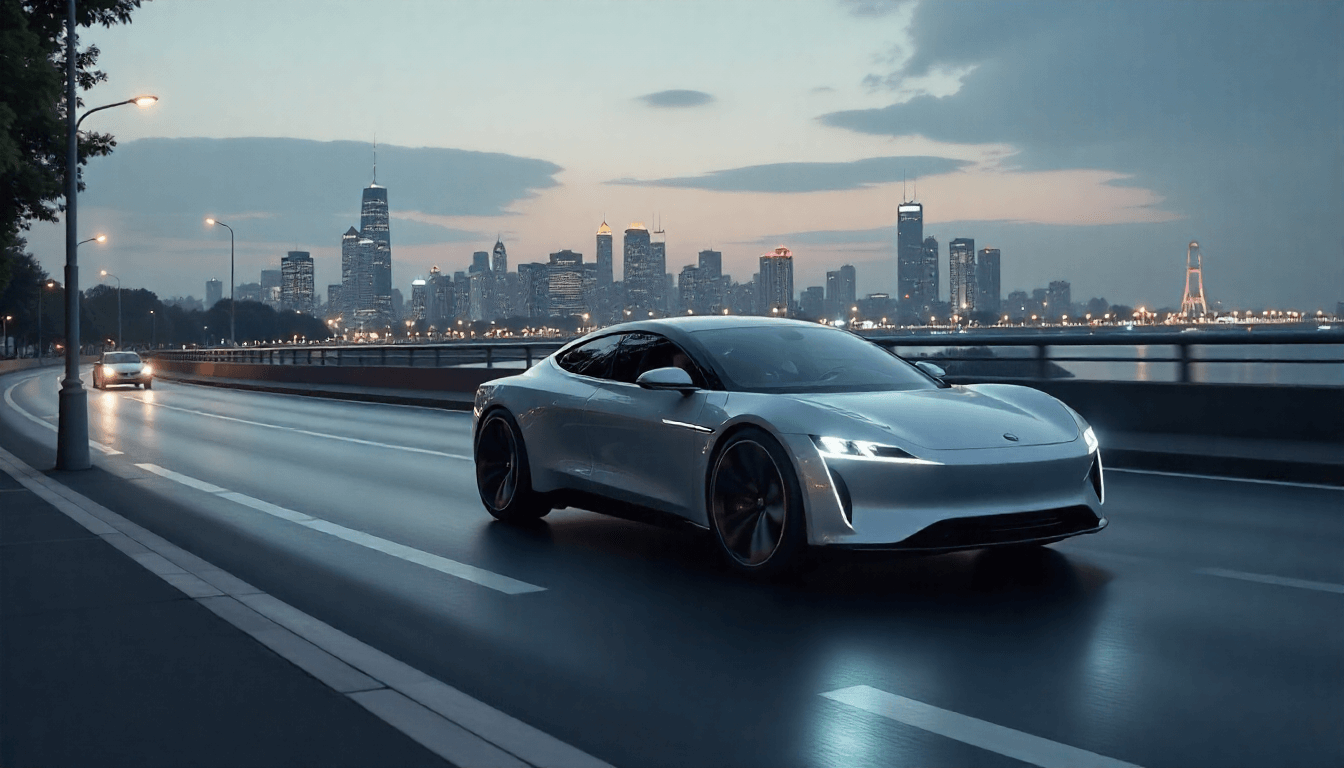Electric transport is rapidly changing the automotive industry. It is no longer a niche product, becoming mainstream. The annual growth in sales of electric vehicles (EVs) worldwide is impressive. This is undoubtedly fuelling the development of new technologies. Accordingly, the future of electric vehicle technology promises to be exciting. By 2030, we will see dramatic changes in every aspect of their design and operation. Understanding these trends allows us to anticipate what the vehicle fleet of the next decade will look like. In this article, we look at key areas of development, from battery packs to autonomous driving systems, and analyse their impact on everyday life.
A revolution in battery technology
The heart of any electric vehicle is its battery pack. It is in this area that the most significant breakthroughs are expected by 2030.
Solid state batteries: a new energy horizon
The industry's main hope is solid state batteries. These batteries will replace liquid electrolyte with solid electrolyte. They promise significant advantages over their existing lithium-ion counterparts.
- Increased energy density. This means more range with less weight and battery capacity. For example, electric cars can travel 800-1000 kilometres on a single charge.
- Increased security. Solid state batteries are much less prone to fire. This is due to the absence of flammable liquid electrolyte.
- Accelerated Charging. These batteries are supposed to be able to charge to 80% in just 10-15 minutes. This will certainly reduce waiting times.
- Durability. Longer service life and less degradation even after thousands of charge/discharge cycles are key benefits.
Many carmakers such as Toyota, Nissan, Solid Power (partner BMW and Ford) and QuantumScape (partner Volkswagen) are actively investing in their development. Commercial deployment is expected in the second half of the decade. This will have a significant impact on the future of electric vehicle technology.
Improvements in lithium-ion batteries
Even without solid state breakthroughs, lithium-ion batteries will continue to evolve. We will see further reductions in their cost. There will also be an increase in energy density.
- Cathode materials. The development of new cathode materials, such as those with high nickel content (NMC 811, NMC 9.5.5) or next-generation lithium-iron-phosphate (LFP), will increase efficiency.
- Cobalt-free and anode-free solutions. Companies are working to reduce dependence on expensive cobalt. They are also exploring anode-free designs, which promises even greater energy density.
- Structural Batteries. The cell-to-pack and cell-to-chassis concept involves integrating the batteries directly into the vehicle's power structure. This will certainly reduce weight. It will also increase the rigidity of the body.
Evolution of electric propulsion systems
The electric motors and power electronics will also undergo significant changes. This will affect efficiency and dynamics.
Integrated power units
By 2030, more and more electric vehicles will use integrated "3-in-1" or "4-in-1" powertrains. These will combine an electric motor, inverter and gearbox in one compact package. Some solutions will also include a battery management system. This will certainly reduce size and weight. It will also increase the overall efficiency of the system.
New types of electric motors
Although permanent magnet synchronous motors remain popular, the development of alternative technologies continues.
- Axial flow engines. These motors are more compact and lighter. They have a high power density. They certainly offer new layout possibilities.
- Motors without rare earth metals. The research is aimed at creating engines that do not use rare earth elements. This will reduce dependence on their extraction and price fluctuations.
Development of charging infrastructure
Problems with charging infrastructure will gradually be solved. This will make electric car ownership even more convenient.
Ultrafast charging stations
By 2030, charging stations with a capacity of 350 kW and above will be widespread. They will make it possible to add hundreds of kilometres of range in a matter of minutes. For example, it will be possible to add 200-300 kilometres of mileage in just 5 minutes. This will certainly significantly reduce waiting times.
Wireless charging
Wireless inductive charging technology will be actively developed. It will make it possible to charge electric vehicles without cables. This is possible both in car parks and, in the future, directly while driving. In fact, it will provide incredible convenience.
V2G (Vehicle-to-Grid) technology
V2G will allow electric vehicles to not only consume energy but also give it back to the grid. This will certainly turn EMs into mobile energy storage devices. They will be able to stabilise the grid during peak loads. In addition, the owners will be able to make money from it. As a result, it will become an important part of the energy ecosystem.
Autonomous driving and smart city integration
Electric vehicles will pioneer autonomous driving. In addition, they are being integrated into the urban infrastructure.
Levels of autonomy
By 2030, we will see widespread adoption of cars with Level 3 and Level 4 autonomy. This means that the car will be able to drive itself in certain conditions. At the same time, it will certainly be able to handle most traffic situations without driver intervention. Some models will even reach level 5. They will be able to go completely driverless in all conditions.
Integration with the urban environment
Electric cars will become part of smart cities. They will exchange data with the infrastructure. This includes traffic lights, road signs and other vehicles. As a result, it will optimise traffic. It will also improve safety. In addition, it will be possible to use energy more efficiently.
Robot taxi and carsharing services
Autonomous electric vehicles will lead to the blossoming of robotaxi services. They will offer convenient and affordable driverless journeys. They will also certainly change the concept of personal car ownership. Carsharing will also become more widespread. This will come at the expense of autonomous and self-charging EMs.
Design, production and user experience
The future of electric vehicle technology will also affect the appearance and interaction with the car.
New design concepts
The absence of the traditional internal combustion engine frees up designers. They will be able to create completely new shapes and interior spaces. This will lead to more spacious and functional salons. Electric cars will become, in effect, "mobile living rooms".
Simplification of production
Fewer moving parts in electric cars makes them easier to manufacture. This will certainly reduce production costs. Moreover, it will speed up assembly lines.
Over-the-air updates (OTA updates)
The software of electric vehicles will be regularly updated "over the air". This will improve functionality. It will also add new features and improve safety. In essence, your vehicle will be constantly improving.
Conclusion
By 2030, electric cars will have undergone a huge transformation. They will become significantly more efficient, safer and more affordable. Battery technology, especially solid state batteries, will revolutionise range and charging speeds. The development of charging infrastructure and the emergence of wireless solutions will make charging as convenient as possible. The proliferation of autonomous driving will turn travelling into a comfortable pastime. Collectively, these innovations will result in the future of electric vehicle technology promises to radically change the way we think about transport. The electric car will transform from a niche product into a dominant force on the roads. It will offer a whole new level of convenience, safety and environmental friendliness.

 The future of electric vehicle technology: what to expect by 2030">
The future of electric vehicle technology: what to expect by 2030">
